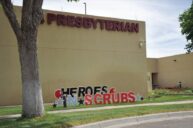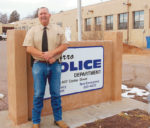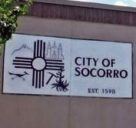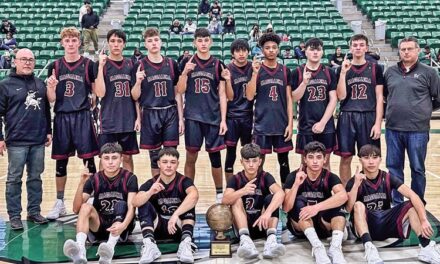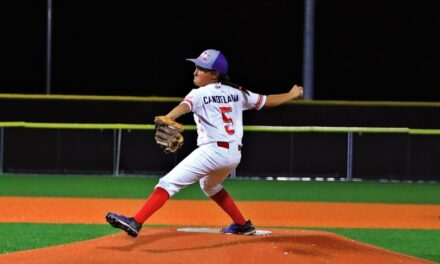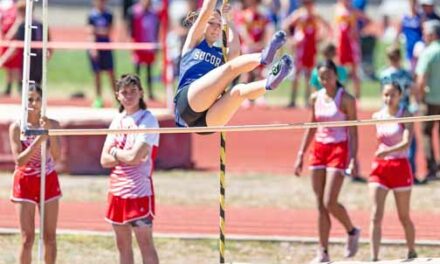
The New Mexico Activities Association has set specific guidelines that allow schools to begin summer workouts starting June 15.
File Photo
An entire spring season worth of sports on both the high school and collegiate levels was lost to the COVID-19 pandemic over the past few months but at long last, Socorro and New Mexico state sports have been cleared to resume some semblance of normalcy beginning June 15.
The New Mexico Activities Association and its Director Sally Marquez, along with Governor Michelle Lujan Grisham have deemed it safe that summer sports programs resume somewhat normal operations for high school sports programs in New Mexico – with some stipulations of course.
On June 2 the NMAA Board of Directors issued Guidance for Return to Play, which passed by an 8-4 vote meaning that summer athletics activities could commence under COVID-19 safe practices.
That guidance will progress in three phases which Socorro High School Athletic Director Alex Johnson both agrees with and has aptly prepared for.
Johnson said what it came down to was mental, social and emotional health not only for student-athletes but for coaches as well. There’s always concern for another COVID-19 outbreak, which has yet to bear similarities to the Spanish Flu of 1918 which took the lives of 50,000,000 people in the early 1900s, but came in two waves over the course of many months, much like COVID-19 possibly could.
Johnson, who coaches cross country, said as a coach his biggest fear is another spike in coronavirus.
“So we always want to do what’s best for our kids. But if this has taught me anything is that our kids need us, but we need them too,” he said. “I’m excited for sure to see the kids and excited to be back too. I don’t want to use the word normal, but whatever the new normal is going to be, we’re also just a little bit more cautious and aware of things that we need to do better as coaches to keep our kids safe.”
Keeping both coaches and players safe requires a laundry list of requirements by the state and the NMAA. For example, Phase 1 requires athletes have no contact and use almost no equipment. That means no footballs for football players, very few volleyballs for volleyball players and few basketballs for basketball players. However, Johnson developed a preemptive plan for much of those Phase 1 stipulations.
While he’s in Missouri working remotely and visiting family, he’s still working for Socorro. Johnson met with all of his coaches virtually last week and created a distinct plan for all Socorro coaches.
“Really it was important to cross all my T’s and dot my proverbial I’s before I left. One of the main things is that I created a return-to-play binder for all coaches, and in order for them to pick up that binder they have to turn in a negative COVID test. That’s within 48 hours of their start date. That’s kind of step one,” Johnson said. “As far as the undertaking is concerned, the big thing for me besides getting your COVID test is having thermometers ready so the kids are going to get checked right when they get there.”
Any student athlete who has a temperature of more than 100.3 degrees will be sent home according to Johnson, who said he simply won’t mess around with the risk.
There’s also a paper form provided by the NMAA that coaches will fill out for the kids and any symptoms of cold, cough or fever will bar that athlete from participating in summer athletics programs. Johnson said he will keep that information on file as long as he needs to.
As far as actual practice goes in the coming months, it will differ greatly between specific sports.
For example football, boys soccer and girls soccer will be allowed to practice outdoors and without equipment during Phase 1. Johnson said coaches will be encouraged to keep players to “pods” of five players, and the state has encouraged coaches to keep those pods of players together as long as possible to avoid intermingling.
“That could be weekly, all summer; but the main thing is to keep the intermingling from happening,” Johnson said. “Even if one kid from one pod finds out they have it, it stays to that one group instead of a football roster of 60 kids. Then you could get 60 kids sick.”
In light of the NMAA’s ruling, every coach will have to adjust to new standards. Socorro High School volleyball coach J.B. Mauldin, who has watched his children participate in Warriors’ athletics for the better part of eight years is working on figuring out his own plan for the upcoming fall season.
“We’re going to probably have limited practices for four to five days a week. Normally we would do spring volleyball, give them a little bit of a break for a week in June,” Mauldin said. “But since we haven’t been able to do anything, we’ll start up June 15 and do as much as we can and go on from there.”
Summer volleyball turnout can range from anywhere from 10 to 15 to 25 athletes, so Mauldin and his staff, like every coach in the state will just have to make do with what they’re given, even if it technically means losing some quality time at the net.
“We’re going to follow the NMAA guidelines that they’ve set out with Phase 1 starting June 15. We’re limited to 15 athletes in the gym at once, or five per coach,” Mauldin said. “Being it’s the summer we might just get about 15 or we might get 25. We’ll have to just play that by ear and see when they come. If we do get more than 15 we’ll have three coaches there, so we’ll stagger them. That’s what we’re planning.”
One advantage, or almost a disadvantage depending on the eye of the beholder that volleyball programs currently have is that they can use balls under a specific set of rules. Mauldin said his team can use volleyballs, but just not share them among players.
“We can use balls, we just can’t share balls. It certainly limits us so initially what we’re going to do is some agility and plyometric stuff, maybe some strength drills,” he said. “That will be without a ball. When we do use a ball each girl will have their own ball that they keep to themselves for the whole time. Obviously we’re not going to share any balls between girls or coaches. We’ll do a few things with that. It limits us but at there are a few things we can do, so that’s our plan for now.”
The current NMAA plan also addresses sanitation, which Johnson seems to have already figured out. Phase 1 states, according to the nmact.org website that “Adequate cleaning schedules should be created and implemented for all athletic facilities. Prior to an individual or groups of individuals entering a facility, hard surfaces within that facility should be wiped down and sanitized (chairs, furniture in meeting rooms, bathrooms, athletic training room tables, etc.).”
Johnson said he’s already been in contact with Socorro High School principal Robert Stephens regarding exactly that.
“I’ve already been in contact with my principal about sanitation before each practice and after each practice. It will be even more intense once we go to using equipment in basketball because those balls with have to be sanitized between every practice,” Johnson said. “It’s a long-winded answer to say yes it’s going to be difficult, but it will be worth it absolutely. Like I said, new normal.”
Regardless of what happens in the coming months in relation to athletics, Johnson said he will abide by state protocol.
“Whether or not we come back full bore, or some other version of it I think we’re all going to be a little bit better at and more aware of the safety side of things. I don’t think that’s necessarily a bad thing,” Johnson said. “Whatever the governor says, that’s what we’re going to do. We’re hopeful and optimistic, but at the same time rules are rules. I think the most important part is we have our kids’ best interest in mind, and are we doing what’s best for them. If so, let’s keep doing it. That’s our goal.”
